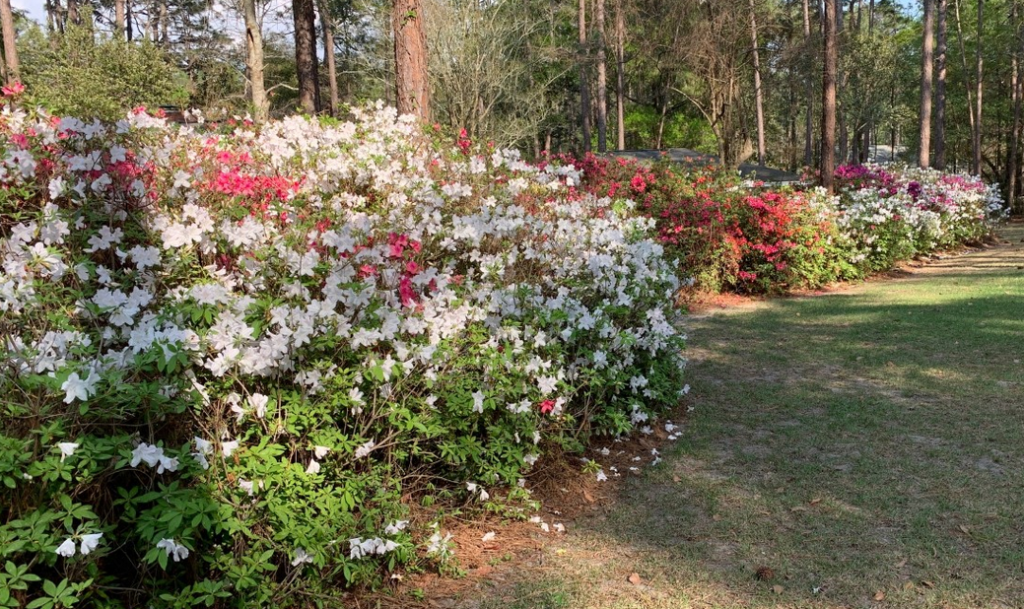It has been amazing seeing all the blooming azaleas around Moultrie the last couple of weeks. Gardeners can keep their azaleas looking great by doing some of these tips.
When do I fertilize my azaleas? This is an excellent question. Apply fertilizer just after flowering. On spring-flowering cultivars, a second application of fertilizer can be made in June, at one-half the spring rate, if necessary. Avoid fertilizing after July 1 because bud set and winter hardiness may be reduced.
To fine tune your fertilizer recommendation consider taking a soil sample. For example, if you have taken your soil sample and it shows that you have a medium P and K level in your azaleas then the recommendation is to apply 16-4-8 or 12-4-8 fertilizer at a rate of 1/2 pound per 100 square feet (5 pounds per 1,000 square feet) in March, May, and July. If an azalea-camellia special fertilizer is used follow directions on the container. Uniformly spread the fertilizer on the soil surface extending it beyond the dripline of the foliage. It is not necessary to remove the mulch before applying the fertilizer. Brush or rinse the fertilizer from the leaves and stems.
When do I prune my azaleas? The best time to prune azaleas is after they bloom. Always prune, however, with a purpose in mind, not just because it is the time to prune. Some plants may need pruning to remove tall, lanky growth or vigorous suckers that detract from the overall form and shape of the plant. It may be desirable to prune to maintain a more compact form. Sometimes it is necessary to prune old, overgrown plants to rejuvenate them or to reduce their size. Like many other broadleaf plants, healthy azaleas can be pruned to within 6 to 12 in. of ground level and will respond with an abundance of new shoots growing from the old wood. Spring-flowering azaleas form their blossom buds for the next year during the summer, so avoid pruning them after July 1.
Do I need to worry about lace bugs? Azalea Lace Bugs are major pests of azaleas. They feed on the underside of leaves, but the damage they cause is most apparent on the upper leaf surface, which appears stippled when groups of adjoining leaf cells become chlorotic. Brown to black droplets of excrement and old “skins” of the nymphs (immature lace bugs) are visible on the undersides of damaged leaves. Adult lace bugs are flattened and rectangular in shape and ⅛ to ¼ in. long. The area behind the head and the wing covers form a broadened, lace-like covering over the body of the insect. The wings of most lace bugs are light amber to transparent in color.
Controlling this insect is simple. Growers should begin scouting for the eggs and cast skins in Mid-March. Usually, a single well-timed spray is sufficient to prevent serious aesthetic injury. Applications should be timed to coincide with the first signs of the nymphal hatch stage that normally occurs in March to mid-April. Chemical controls include acephate , imidacloprid, oils, and soaps. Remember to read the label carefully and follow all instructions when using pesticides. If you have any questions about azalea culture or about azalea lacebug control, please contact your local County Extension Agent.
